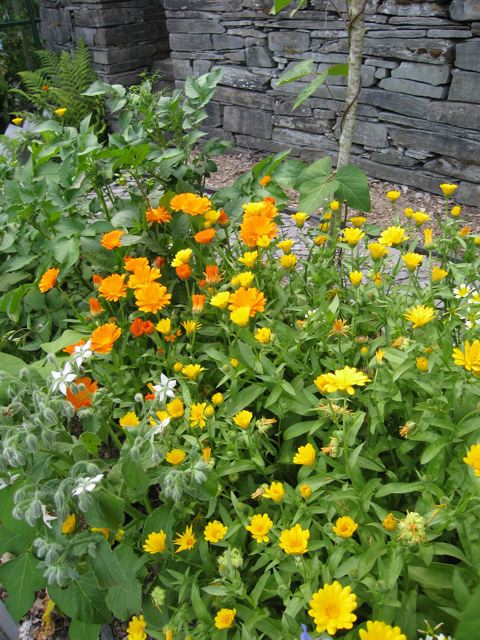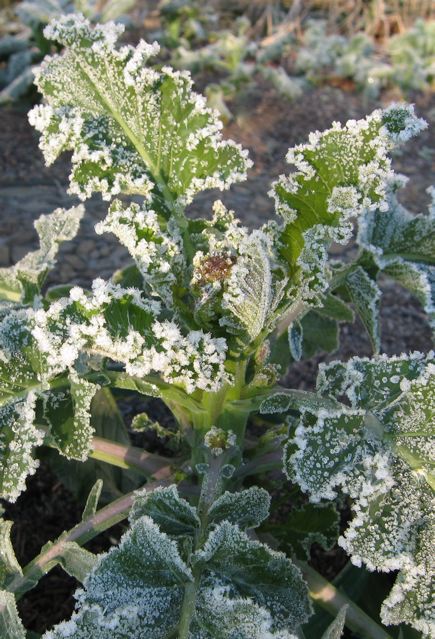Ask not what your garden can do for you; the question is what you, as an earth-friendly gardener, could be doing for the planet.
What can I do? The thought tugs at my conscience each time I slide open the doors of my greenhouse or gaze out across my garden. It tugs when I’m buying seeds, plants or potting compost, driving to a garden centre, or checking my virtual shopping basket. Mostly the thought gently steers me, but sometimes it flummoxes me or dangles me from dilemma’s hook. It’s not, ‘What can I do out here today?’, but more, ‘What can I do in my garden to make the world a better place – now and in the future?’. And you thought gardening was about changing your bedding plants, not changing the world. Well, the world around us is already changing, dramatically and irreversibly, so a sea change in gardening is long overdue.
Earlier this month the Tyndall Centre for Climate Change Research organised a sobering yet intriguing conference called ‘Radical Emissions Reduction’. You won’t have heard much about this conference in the headlines; mainstream news coverage has been non-existent. The Tyndall Centre combines a dynamic mix of climate and social scientists, economists and engineers, who work across society to explore and communicate ways of responding and adapting to human-made climate change. Their powerful message is science-based, realistic and urgent: we’ve left it too late to achieve the reductions in emissions of carbon dioxide (the main ‘greenhouse gas’) that would be needed to keep global warming within so-called ‘safe’ limits (officially 2°C), so it’s time for a radical, emissions-cutting plan (10% each year) – and it needs to start yesterday.

You can explore the conference’s unsettling projections for yourself, but Tyndall’s bottom line is this: we in the rich, developed world (i.e. 1 to 5% of the global population) must drastically cut our use of fossil fuel energy, and therefore our carbon emissions. If we don’t, humans (and the other species we share the earth with) will face temperature rises which will bequeath us a dramatically altered climate and a tougher, crueler future (a rise of 3 to 4°C or more). A key call in the ‘radical emissions plan’ is for the energy-profligate minority to tighten their belts – by effectively de-growing their economies – to allow other parts of the world to emit some carbon as they develop, while we move together toward low-carbon living.
Looking around the rich and ‘developed’ gardening world, it would be easy to think that our increasingly chaotic climate, and the weather it bestows on our plots, is merely an irritation. There’s excited talk of unseasonal flowering, tips on growing successfully amid more higgledy-piggledy weather, and the usual inane celebrity soundbites about how, in a warming world, we’ll be able to grow olives in Oldham. Only a few media gardeners have twigged that the more erratic weather actually means that growing anything that depends on a run of reliable, reasonably consistent seasons is increasingly a no-no; that was the weather that was. And then there’s our gardening industry, preoccupied only with how the gathering clouds might hush the bleeping of the checkouts. But while our dahlias’ chances might be dashed by the increasingly turbulent weather, extreme events affecting the other 95% of humanity might dash their chances of survival itself.
So what can we do – in our gardens, on our allotments, on our patios and balconies, and in our window boxes – to help fend off a warmer, less hospitable world? To get our emissions tumbling, and fast, as per Tyndall’s radical plan, we must cut energy use. We need to use less energy directly – think abandoning your lawn, retiring the greenhouse heater, not booking that gardening cruise – and also to reduce our demand for the energy that goes into making and transporting things – think buying less stuff, especially if it’s from far away.
Rethinking gardening and seeing it through fresh eyes, with the well-being of those beyond our hedges in mind, will be quite a journey, with bumps and gripes along the way. There will be ample dilemmas, some earthy and practical, others moral and soul-searching; some we won’t know about until they hook us. We’ll need to become more thoughtful and ingenious on our plots, more patient and forward-thinking, more collaborative and sharing, as new values take root. We’ll need to give up growing some plants, and try different, less energy-dependent ones. We’ll need to let renewable sunshine, not climate-changing fossil fuels, warm our greenhouses.

Gaining new skills will be important, but the vital ones won’t necessarily be the most obvious; becoming more dogged, questioning and persuasive will help us trigger change in businesses that currently – at best – pay lip service to the wider environment. We need to be pushy on everything from pesticides to packaging, to insist on the durable, the compostable, the recyclable, the returnable. We need to ask who made it, where and under what conditions; we need a hunger for transparency; we need to recast ourselves as green-fingered citizens rather than advertising-bewitched sofa spenders. Putting our cash into trusted, nearby and ethical gardening businesses will bring goods and expertise closer to home, cut emissions and create meaningful, perennial jobs. To shrink our bloated, high-carbon gardening footprints we’ll need to encourage the independent, local and resilient.
Much of this has yet to take root, but there’s stuff we can do now to make the world a better place. Take lawns. They guzzle petrol, fertilisers, pesticides (including neonicotinoids) and weedkillers, all of which require energy and emit carbon, and they breach the peace when they’re mown. If you recycle your lawnmower this winter, what’s the worst that can happen come spring? You could let your grass run wild and see what gems it’s been hiding, or use the space to expand your borders and grow more flowers; bees, other insects and wildlife will reap the rewards. You could turn it into an ultra-local, food mile- and packaging-free, emissions-cutting edible plot. Either way, you get to engage in more interesting, more climate-friendly and more bountiful gardening. Cutting emissions doesn’t mean cutting down on fun or satisfaction.
Growing more flowers or food might not seem so radical, but for every mower that’s silenced, every pack of fertiliser, pesticide or weedkiller that’s not made, our garden-related emissions fall a little. Roll that thought down your street, then around all the roads or lanes in your neighbourhood, village, town or city, and it all adds up. It’s just one of many things we can do.
It’s time to unlock the radical inside us all. What’s your plan?
Text and images © John Walker


